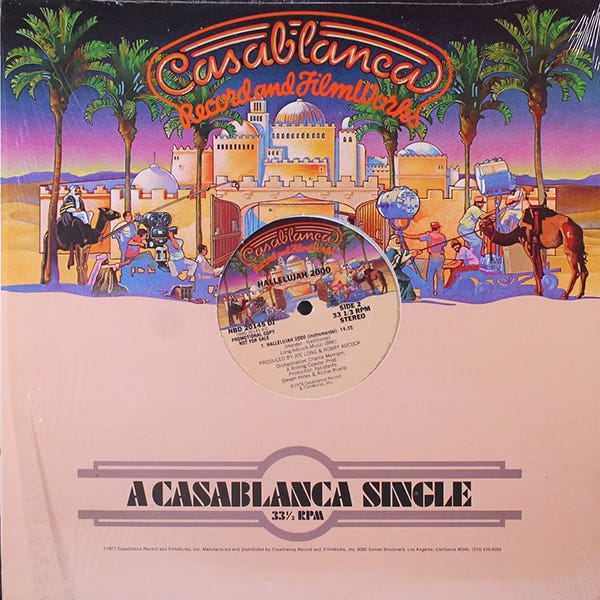🎭 Casablanca Records: The Odd, the Obscure, and the Overlooked - Bonus Episode
The Twelve Inch 001 : The Story Of Casablanca Records Part 5 - The Bonus edition
I had originally planned to wrap up the Casablanca Records story with the two Q&A episodes. But then I received a message from subscriber
, who suggested two titles that could each merit their own episode. One of them is already on my shortlist and will get a full Friday feature. The other, a curious Casablanca release, caught my attention. I knew the record, it’s even in my collection somewhere, but I’ve never used it in any mixtape because it’s one of those wonderfully odd disco tracks.As I’ve explained in earlier posts, the short but explosive history of seventies disco can be divided into several distinct phases. By the final period (1978–1979), disco had become a $4 billion industry. Everyone wanted a piece of it, and any spark of inspiration seemed reason enough to make a disco record. Casablanca, of course, went all in, at one point having more artists under contract than even CBS, the market leader. They released an enormous number of records, far more than even their powerful…
Keep reading with a 7-day free trial
Subscribe to The Twelve Inch to keep reading this post and get 7 days of free access to the full post archives.


